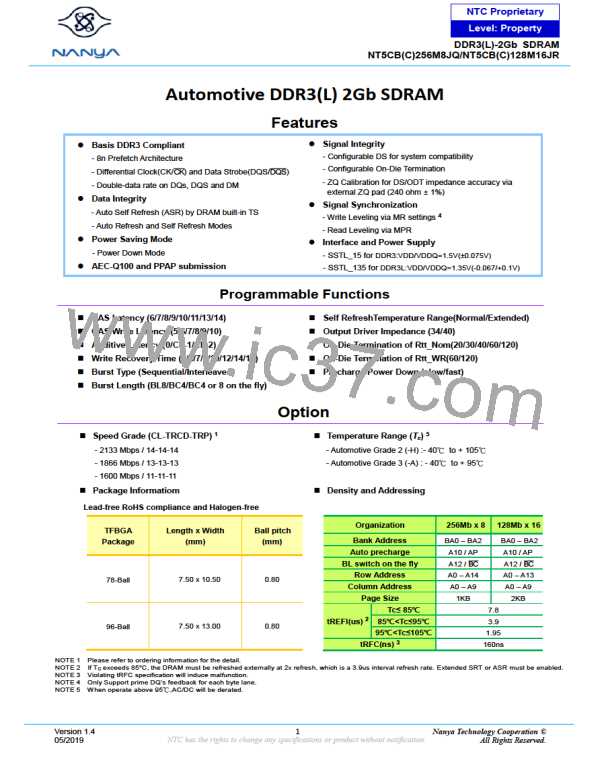NTC Proprietary
Level: Property
DDR3(L)-2Gb SDRAM
NT5CB(C)256M8JQ/NT5CB(C)128M16JR
Vref Tolerances
The dc-tolerance limits and ac-noise limits for the reference voltages VrefCA and VrefDQ are illustrated in the following
figure. It shows a valid reference voltage Vref(t) as a function of time. (Vref stands for VrefCA and VrefDQ likewise).
Vref(DC) is the linear average of Vref(t) over a very long period of time (e.g.,1 sec). This average has to meet the min/max
requirement in previous page. Furthermore Vref(t) may temporarily deviate from Vref(DC) by no more than ±1% VDD.
The voltage levels for setup and hold time measurements VIH(AC), VIH(DC), VIL(AC), and VIL(DC) are dependent on Vref.
“Vref” shall be understood as Vref(DC).
The clarifies that dc-variations of Vref affect the absolute voltage a signal has to reach to achieve a valid high or low level
and therefore the time to which setup and hold is measured. System timing and voltage budgets need to account for Vref(DC)
deviations from the optimum position within the data-eye of the input signals.
This also clarifies that the DRAM setup/hold specification and de-rating values need to include time and voltage associated
with Vref ac-noise. Timing and voltage effects due to ac-noise on Vref up to the specified limit (±1% of VDD) are included in
DRAM timing and their associated de-ratings.
Illustration of Vref(DC) tolerance and Vrefac-noise limits
Voltage
VDD
VRef(t)
Vref ac-noise
Vref(DC)max
Vref(DC)
VDD/2
Vref(DC)min
VSS
time
Version 1.4
05/2019
90
Nanya Technology Cooperation ©
All Rights Reserved.

 NANYA [ Nanya Technology Corporation. ]
NANYA [ Nanya Technology Corporation. ]